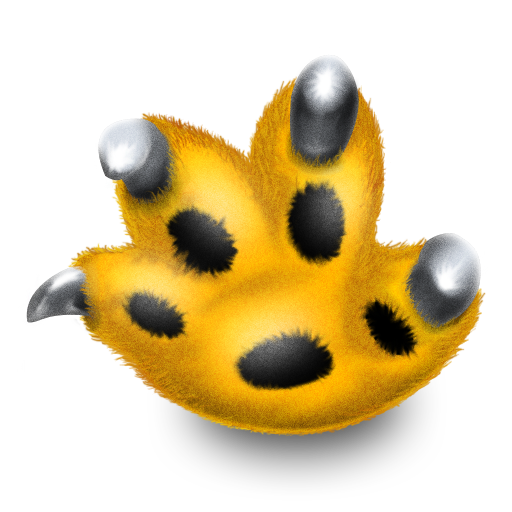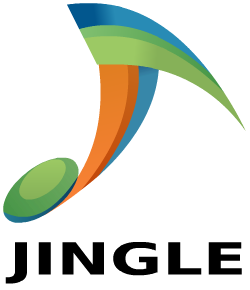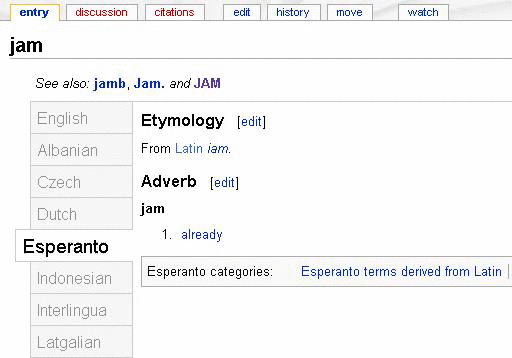|
Coccinella (software)
Coccinella (from the Latin "coccinella", ''ladybird'') is a Free software, free and Open-source software, open-source cross-platform client for the Extensible Messaging and Presence Protocol, XMPP/Jabber-instant messaging-protocol. The software is written in the Tcl/Tk (framework), Tk language, and it runs under Berkeley Software Distribution, BSD, Linux, macOS, Mac OS X, Solaris (operating system), Solaris, Microsoft Windows, Windows and all other platforms that support Tcl/Tk. Mats Bengtsson published it in 1999, under the name ''Whiteboard''. It was renamed ''Coccinella'' in 2003. Features * MUC (Multi-User Chat) * Whiteboard * Transport Layer Security, encrypted connections * configurable Design (Themes/Skin (computing), Skins) * Unicode * Userinterface with Tab (GUI), Tabs * Eventsignaling by Sound * VoIP-support over XMPP-Jingle (protocol), Jingle-Extension * Emoticons * Typing Notification (see, when your peer-user is typing) * Icon in system tray * Avatar (computing), ... [...More Info...] [...Related Items...] OR: [Wikipedia] [Google] [Baidu] |
Coccinella
''Coccinella'' is the most familiar genus of ladybird (or, in North America, ladybug). The elytra of most species are of a red or orange colour, punctuated with black spots or bands. The genus occurs throughout the Northern Hemisphere, but has only 11 species native to North America, with far more in Eurasia. Its name comes from Latin ''coccineus'', referring to the color scarlet (color), scarlet. Adults and larvae are voracious predators of aphids, and some species (e.g. ''Coccinella septempunctata, C. septempunctata'') are used as Biological pest control, biological control agents. References External links Photos of ''C. septempunctata'' consuming an aphid Coccinellidae genera Beetles of Europe Insects used as insect pest control agents Biological pest control beetles Taxa named by Carl Linnaeus {{Coccinellidae-stub ... [...More Info...] [...Related Items...] OR: [Wikipedia] [Google] [Baidu] |
Tk (framework)
Tk is a free and open-source, cross-platform widget toolkit that provides a library of basic elements of GUI widgets for building a graphical user interface (GUI) in many programming languages. Tk provides a number of widgets commonly needed to develop desktop applications, such as button, menu, canvas, text, frame, label, etc. Tk has been ported to run on most flavors of Linux, Mac OS, Unix, and Microsoft Windows. Like Tcl, Tk supports Unicode within the Basic Multilingual Plane, but it has not yet been extended to handle the current extended full Unicode (e.g., UTF-16 from UCS-2 that Tk supports). Tk was designed to be extended, and a wide range of extensions are available that offer new widgets or other capabilities. Since Tcl/Tk 8, it offers "native look and feel" (for instance, menus and buttons are displayed in the manner of "native" software for any given platform). Highlights of version 8.5 include a new theming engine, originally called Tk Tile, but it is now general ... [...More Info...] [...Related Items...] OR: [Wikipedia] [Google] [Baidu] |
Growl (software)
Growl is a deprecated global notification system and pop-up notification implementation for the Mac OS X and Windows operating systems. Applications can use Growl to display small notifications about events which may be important to the user. This software allows users to fully control their notifications, while allowing application developers to spend less time creating notifications and Growl developers to concentrate on the usability of notifications. Growl can be used in conjunction with Apple's Notification Center that is included in Mac OS X 10.8 (Mountain Lion) and higher. Details Growl is installed as a preference pane added to the Mac OS X System Preferences. This pane may be used to enable and disable Growl's notifications for specific applications or specific notifications for each application. Each notification provides some information, such as "Download Finished" or the name of the current iTunes track. The software comes with multiple display plugins, providing ... [...More Info...] [...Related Items...] OR: [Wikipedia] [Google] [Baidu] |
Mac OS X
macOS (; previously OS X and originally Mac OS X) is a Unix operating system developed and marketed by Apple Inc. since 2001. It is the primary operating system for Apple's Mac (computer), Mac computers. Within the market of desktop and laptop computers it is the Usage share of operating systems#Desktop and laptop computers, second most widely used desktop OS, after Microsoft Windows and ahead of ChromeOS. macOS succeeded the classic Mac OS, a Mac operating system with nine releases from 1984 to 1999. During this time, Apple cofounder Steve Jobs had left Apple and started another company, NeXT Computer, NeXT, developing the NeXTSTEP platform that would later be acquired by Apple to form the basis of macOS. The first desktop version, Mac OS X 10.0, was released in March 2001, with its first update, 10.1, arriving later that year. All releases from Mac OS X Leopard, Mac OS X 10.5 Leopard and after are UNIX 03 certified, with an exception for OS X Lion, OS X 10. ... [...More Info...] [...Related Items...] OR: [Wikipedia] [Google] [Baidu] |
Avatar (computing)
In computing, an avatar is a graphical representation of a user or the user's character or persona. Avatars can be two-dimensional icons in Internet forums and other online communities, where they are also known as profile pictures, userpics, or formerly picons (personal icons). Alternatively, an avatar can take the form of a three-dimensional model, as used in online worlds and video games. The term ' () originates from Sanskrit, and was adopted by early computer games and science fiction novelists. Richard Garriott extended the term to an on-screen user representation in 1985, and the term gained wider adoption in Internet forums and MUDs. Nowadays, avatars are used in a variety of online settings including social media, virtual assistants, instant messaging platforms, and digital worlds such as ''World of Warcraft'' and ''Second Life''. They can take the form of an image of one's real-life self, as often seen on platforms like Facebook, or a virtual character that diverge ... [...More Info...] [...Related Items...] OR: [Wikipedia] [Google] [Baidu] |
System Tray
A taskbar is an element of a graphical user interface which has various purposes. It typically shows which programs are currently running. The specific design and layout of the taskbar varies between individual operating systems, but generally assumes the form of a strip located along one edge of the screen. On this strip are various icons which correspond to the windows open within a program. Clicking these icons allow the user to easily switch between programs or windows, with the currently active program or window usually appearing differently from the rest. In more recent versions of operating systems, users can also "pin" programs or files so that they can be accessed quickly, often with a single click. Due to its prominence on the screen, the taskbar usually also has a notification area, which uses interactive icons to display real-time information about the state of the computer system and some of the programs active on it. With the rapid development of operating systems ... [...More Info...] [...Related Items...] OR: [Wikipedia] [Google] [Baidu] |
Emoticon
An emoticon (, , rarely , ), short for "emotion icon", also known simply as an emote, is a pictorial representation of a facial expression using Character (symbol), characters—usually punctuation marks, numbers, and letters—to express a person's feelings, mood or reaction, or as a time-saving method. The first ASCII emoticons are generally credited to computer scientist Scott Fahlman, who proposed what came to be known as "smileys":-) and :-(in a message on the bulletin board system (BBS) of Carnegie Mellon University in 1982. In Western countries, emoticons are usually written at a right angle to the direction of the text. Users from Japan popularized a kind of emoticon called kaomoji, utilizing the larger character sets required for Japanese, that can be understood without tilting one's head to the left. This style arose on ASCII NET of Japan in 1986. As SMS mobile text messaging and the Internet became widespread in the late 1990s, emoticons became increasingly popula ... [...More Info...] [...Related Items...] OR: [Wikipedia] [Google] [Baidu] |
Jingle (protocol)
Jingle is an extension to XMPP (Extensible Messaging and Presence Protocol) which adds peer-to-peer (P2P) session control (signaling) for multimedia interactions such as in Voice over IP (VoIP) or videoconferencing communications. It was designed by Google and the XMPP Standards Foundation. The multimedia streams are delivered using the Real-time Transport Protocol (RTP). If needed, NAT traversal is assisted using Interactive Connectivity Establishment (ICE). , the proposed Jingle specification had not yet been approved by the XMPP Standards Foundation, but is now a Draft Standard, meaning: "''Implementations are encouraged and the protocol is appropriate for deployment in production systems, but some changes to the protocol are possible before it becomes a Final Standard.''" The libjingle library, used by Google Talk to implement Jingle, has been released to the public under a BSD license. It implements both the current standard protocol and the older, pre-standard version. ... [...More Info...] [...Related Items...] OR: [Wikipedia] [Google] [Baidu] |
VoIP
Voice over Internet Protocol (VoIP), also called IP telephony, is a method and group of technologies for the delivery of voice communications and multimedia sessions over Internet Protocol (IP) networks, such as the Internet. The terms Internet telephony, broadband telephony, and broadband phone service specifically refer to the provisioning of communications services (voice, fax, SMS, voice-messaging) over the Internet, rather than via the public switched telephone network (PSTN), also known as plain old telephone service (POTS). Overview The steps and principles involved in originating VoIP telephone calls are similar to traditional digital telephony and involve signaling, channel setup, digitization of the analog voice signals, and encoding. Instead of being transmitted over a circuit-switched network, the digital information is packetized and transmission occurs as IP packets over a packet-switched network. They transport media streams using special media delivery protocols t ... [...More Info...] [...Related Items...] OR: [Wikipedia] [Google] [Baidu] |
Tab (GUI)
In interface design, a tab is a graphical user interface object that allows multiple documents or panels to be contained within a single window, using tabs as a navigational widget for switching between sets of documents. It is an interface style most commonly associated with web browsers, web applications, text editors, and preference panes, with window managers, especially tiling window managers, being lesser known examples. Tabs are modeled after traditional card tabs inserted in paper files or card indexes (in keeping with the desktop metaphor). Tabs may appear in a horizontal bar or as a vertical list, of which the former takes typically less screen space whereas the latter can show more items at once while still having space for individual titles. Horizontal tabs may have multiple rows. Tabs may be organizable by changing their order through drag and drop or creating a separate window from an existing tab. Implementations may support range-selecting multiple tabs fo ... [...More Info...] [...Related Items...] OR: [Wikipedia] [Google] [Baidu] |
Unicode
Unicode, formally The Unicode Standard,The formal version reference is is an information technology Technical standard, standard for the consistent character encoding, encoding, representation, and handling of Character (computing), text expressed in most of the world's writing systems. The standard, which is maintained by the Unicode Consortium, defines as of the current version (15.0) 149,186 characters covering 161 modern and historic script (Unicode), scripts, as well as symbols, emoji (including in colors), and non-visual control and formatting codes. Unicode's success at unifying character sets has led to its widespread and predominant use in the internationalization and localization of computer software. The standard has been implemented in many recent technologies, including modern operating systems, XML, and most modern programming languages. The Unicode character repertoire is synchronized with Universal Coded Character Set, ISO/IEC 10646, each being code-for-code id ... [...More Info...] [...Related Items...] OR: [Wikipedia] [Google] [Baidu] |
Skin (computing)
In computing, a skin (also known as visual styles in Windows XP) is a custom graphical appearance preset package achieved by the use of a graphical user interface (GUI) that can be applied to specific computer software, operating system, and websites to suit the purpose, topic, or tastes of different users. As such, a skin can completely change the look and feel and navigation interface of a piece of application software or operating system. Software that is capable of having a skin applied is referred to as being skinnable, and the process of writing or applying such a skin is known as skinning. Applying a skin changes a piece of software's look and feel—some skins merely make the program more aesthetically pleasing, but others can rearrange elements of the interface, potentially making the program easier to use. Common skinnable applications The most popular skins are for instant messaging clients, media center, and media player software, such as Trillian and Winamp, due t ... [...More Info...] [...Related Items...] OR: [Wikipedia] [Google] [Baidu] |


.jpg)





